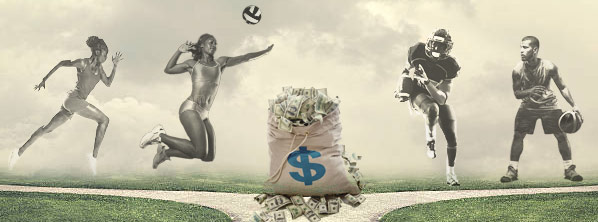
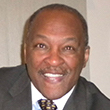 Dr. Al-Tony Gilmore, a Distinguished Historian Emeritus of the National Education Association, has researched, lectured, and published widely on the intersection of sports and society, including his seminal book, Bad Nigger: The National Impact of Jack Johnson (Associated Faculty Press, 1975). He has been a history professor at Howard University, the University of Maryland, and a Visiting Scholar at George Washington University. In this new commentary, Dr. Gilmore examines the state of athletics at the nation’s historically Black colleges and universities.
Dr. Al-Tony Gilmore, a Distinguished Historian Emeritus of the National Education Association, has researched, lectured, and published widely on the intersection of sports and society, including his seminal book, Bad Nigger: The National Impact of Jack Johnson (Associated Faculty Press, 1975). He has been a history professor at Howard University, the University of Maryland, and a Visiting Scholar at George Washington University. In this new commentary, Dr. Gilmore examines the state of athletics at the nation’s historically Black colleges and universities.Deion Sanders has been good for HBCU sports. In two years as football coach at Jackson State University, his accomplishments have been nothing short of extraordinary and unprecedented since the national desegregation of college sports in the 1970s. Through the leveraging of his enormous celebrity, sustained high-profile, Hall of Fame credentials, and his unbridled advocacy for HBCU football, he has singlehandedly introduced wider audiences to the larger issues and challenges of HBCU sports.
Sanders has expressed consternation over the best HBCU players being overlooked in the NFL draft; and his name recognition, in large part, has resulted in ESPN and the digital platform HBCUGo.TV – the leading media provider for the nation’s 105 HBCUs – expanding broadcasting and streaming of more HBCU sporting events than ever. His first year recruiting class (2021) was the highest-ranked of all schools at the FCS level, and he recently stunned the entire sports world with the most important HBCU signing of the modern era, Travis Hunter of Suwanee, Georgia, the nation’s top-ranked player in the class of 2022. Shortly afterward, he signed Kevin Coleman of St. Louis, Missouri, also one of the nation’s top scholastic players. Moreover, it cannot be denied that Sanders deserves much credit for the “officially” sold-out Celebration Bowl, in Atlanta’s Mercedes Benz Stadium, with a record-breaking attendance of 48,653 — a game, like most bowl games, where ticket sales are secondary to television ratings.
While the Celebration Bowl (Black National Championship Game) attendance numbers are auspicious — especially during a period of more than a half-century which has witnessed a steady decline in the quality of HBCU athletes – those attendance numbers are nothing new for HBCU football. The Bayou Classic held annually in New Orleans’ Superdome between Southern University and Grambling University has consistently attracted upwards of 68,000 fans since 2015. Notably, before the widespread integration of collegiate athletics, Florida A&M’s Orange Blossom Classic – for decades HBCU football’s major attraction — drew 47,000 or more to Miami’s Orange Bowl. Earlier from the late 1930s through the 1950s, the annual Wilberforce University and Tuskegee Institute games at Chicago’s Comiskey Park and the Howard and Lincoln games at Washington, D.C.’s Griffith Stadium drew capacity crowds. The Capitol Classic games between selected HBCU teams, also held at Griffith Stadium from 1942 to 1954, sold out. So, large crowds are nothing new for HBCU football. But the large crowds for those special HBCU games, then and now, are a small fraction of actual games and are in sharp contrast to the majority of games where attendance — other than homecomings — is generally less and no more than the student enrollments.
In 1968, the National Urban League sponsored the Morgan State and Grambling game — only a few months after the assassination of Martin Luther King, Jr. — which attracted a crowd of over 60,000 to New York’s Yankee Stadium. Sportswriter Bill Rhoden remembered, “somebody said it was the beginning of the beginning, but it was the beginning of the end.”
In many ways, he was correct because it was also the time when the predominantly White colleges and universities first began to aggressively recruit Black athletes. Following the 1970 defeat of the segregated University of Alabama team, by an integrated University of Southern California team, led by an all-Black backfield in a nationally televised game, former University of Maryland football coach, Jerry Claiborne, famously said that the game did “more for integration in Alabama in sixty minutes than Martin Luther King, Jr. did in 20 years.” That game marked the opening of the floodgates for the recruiting of Black athletes, though a leak in the dam had occurred in 1966 when Texas Western College (now the University of Texas, El Paso), with an all-Black starting line-up, won the NCAA basketball title by defeating an all-White University of Kentucky team.
But what those two games meant for the future of athletics at predominately White institutions (PWIs), was the direct opposite of what they ordained for HBCU athletics. They launched the former on an upward trajectory and caused a downward spiral for the latter, much more pronounced in the revenue-generating sports of football and basketball – which largely fund all non-revenue generating collegiate athletics. Since that time, money has come to totally define the operation of NCAA sanctioned college sports, and the monopoly that HBCUs once had on the best of Black athletes is a distant memory of the past. The schools with the best athletes make more money than the schools without them, and the best Black athletes have overwhelmingly chosen PWIs – both Power 5 and mid-major schools – since the early 1970s. Those schools with superior resources provide wider exposure for the talents of their student athletes.
Money and the pursuit of more money have become the driving force behind all college sports – especially football and basketball. The correlation between winning and the schools with the best athletes is as indisputable as the correlation between winning and revenue. Winning sells tickets, secures remunerative media contracts, attracts wealthy corporate sponsors, lines the pockets of coaches and sports administrators while satisfying alumni, students, and fans. The financial rewards from winning help schools build state-of-the-art athletic facilities, which in turn assist in recruiting the best athletes and hiring the most successful coaches with lucrative contracts. The NCAA generates $19 billion annually, but small schools and HBCUs are decidedly outside of this paradigm and do not equitably share in that wealth.
The Current State of HBCU Athletics
Increasingly the expenses of operating football and, to somewhat of a lesser extent, basketball programs, have outpaced the growth in HBCU athletic program budgets. Since the mid-1970s, over a score of HBCUs have dropped football programs, though over the past decade a smaller number have reinstituted scaled-down versions, most notably Shaw, St. Augustine’s, Lincoln of Pennsylvania, Central State, Benedict, and Allen. Many of the smaller schools have made difficult but necessary financial decisions to survive as educational institutions and have downsized their athletic programs, which are either no longer sustainable or are impossible to operate with budgets largely dependent on student athletic fees. They have been forced to align their limited resources with the valued priorities of maintaining quality and competitive academic programs.
But even the larger state and federally funded schools of the Southwestern Athletic Conference (SWAC) and Mid-Eastern Athletic Conference (MEAC) – the only two HBCU conferences recognized by the NCAA as Division I schools – have found it difficult to compete in the revenue-generating market of major college sports. There are 20 schools combined in those two conferences, roughly 20 percent of all HBCUs. Of those 20 schools, only three have enrollments of over 9,000 students (Howard, Florida A&M, and Prairie View) and two of those schools do not have football programs (Coppin and the University of Maryland at Eastern Shore.) All have basketball, track and field, cross country, golf, and tennis programs for men and women, and other sports including volleyball, soccer, baseball, bowling, and softball.
Two other HBCU conferences the Central Intercollegiate Athletic Association (CIAA) and the Southern Intercollegiate Athletic Association (SIAC) are comprised of 27 schools and operate at the Division II level of the NCAA. All of those schools except two, Claflin and LeMoyne-Owen, have football programs, and all sponsor basically the same non-revenue generating sports for men and women as do the SWAC and the MEAC. Most of those sports now offered for women had either not existed at HBCUs or had been dormant for over a generation. This was changed because of Title IX of the Education Act of 1972, which requires equal opportunity for women in collegiate athletic programs. These women’s sports, while required for NCAA affiliation, unfortunately, do not generate self-sustaining revenue. Prior to WWII, women’s tennis, basketball, and track were popular sports at many HBCUs, and from 1935 to 1942 the Tuskegee University women’s track and field program won six consecutive National Amateur Athletic Union (AAU) championships. Later, in the 1950s and 1960s Tennessee State would dominate women’s track.
In the National Association for Intercollegiate Athletics (NAIA), the Gulf Coast Athletic Conference (GCAC) with 5 member schools is the only all-HBCU conference, while its Red River Athletic Conference (RRAC) have both HBCU (6) and PWI (8) members, as does its Continental Athletic Conference with HBCUs (4) and PWIs (14). Most of these smaller private schools with enrollments below or near 1,000 students cannot afford football programs, but they offer women’s volleyball and men’s and women’s basketball and soccer. Several also have baseball teams. All of the schools in those three conferences once had football teams in their prior HBCU conference affiliations. The largest of these schools are Xavier, Langston, Dillard, and Tougaloo and the smaller are Fisk, Rust, Wiley, Paul Quinn, Morris, Voorhees, Hutson-Tillotson, Philander-Smith, Jarvis Christian, Arkansas Baptist, and Texas College. These schools are those hit hardest by integration.
The decline in the athletic programs at these schools may now be irreversible, and only an improbable massive infusion of money could restore the sports programs they have lost since integration. As it should be, these schools center their financial priorities and energies on infrastructure, academic programs, faculty, and on raising money and increasing their small endowments. On those campuses, sports promote school spirit and alumni pride while enhancing the institutional experience. In such places, there is real and renewed meaning to the words on sports and character building, written over a century ago by legendary sportswriter Grantland Rice: “For when the One Great Scorer comes to mark against your name, He writes – not that you won or lost – but how you played the game.”
The NCAA FBS Division I (Football Bowl Subdivision) is the category of major athletic conference football programs representing 128 schools. Football schools in the MEAC and SWAC are categorized by the NCAA as FCS Division I (Football Championship Subdivision) and represent 20 of 125 small college programs. In football, the better teams in the MEAC and SWAC often achieve national rankings. In basketball, the conference tournament champions receive automatic bids to the NCAA tournament, but in that sport, those conferences are ranked lowest among the conferences which compete for the title.
For the CIAA and SIAC, those member schools also have low rankings within NCAA Division II. However, when the HBCU schools compete against each other and similarly sized and athletically budgeted schools, the playing field is more level, though such competitive and character-building athletics are generally played before relatively small audiences and without significant media contracts. Those games are not cost-effective and produce small amounts of revenue. Notable exceptions are the Bayou Classic, the Celebration Bowl, and the annual CIAA Basketball Tournament, an economic powerhouse whose $43.7 million contributed more to Charlotte, North Carolina’s economy than the $35.6 million produced by the Atlantic Coast Conference tournament, according to that city’s Regional Visitors Authority. All of those three HBCU events are as much social and entertainment as athletic: marching bands, reunions, expressions of Black culture, entertainment venues, and archipelagos of parties.
After 15 years Baltimore outbid Charlotte for the CIAA Basketball Tournament – which will move in 2022 – with an improved financial and media package including $1.5 million in promised scholarships. All three athletic events are broadcast on national television with deals brokered by those conferences. The Bayou Classic’s $50 million impact is a major source of revenue for the economy of New Orleans, with each school ( Grambling and Southern) splitting close to $4 million. The Celebration Bowl provides $1 million per conference, with each participating school receiving $600,000 of that amount, plus all revenue those schools generate from ticket sales. All expenses (hotel, travel, food, band, and cheerleaders ) must be paid from those payouts.
The revenue from men’s football and basketball is required to sustain the non-revenue generating sports, and for compliance with Title IX. Hampton, Prairie View, North Carolina A&T are among the few HBCUs that post marginal profits from their athletic programs. Many HBCUs, as well as lower-division schools, have athletic budgets of around $4.5 million (in some cases the salaries of a Power 5 conference coach is more), and the larger MEAC and SWAC schools have budgets of between $10 million and $14 million. By comparison, higher division PWIs have athletic budgets over $100 million.
Money Games
As a result, HBCU school athletic directors and conference commissioners are challenged to find and secure more sources and means of revenue for athletics. One controversial remedy for generating revenue is the practice of scheduling “money games” in football and basketball. In these games, the larger athletic programs pay HBCUs and small schools large sums to play early-season games, always at the larger budgeted schools’ athletic facilities for what they consider an easy or “guaranteed” win.
In search of this “high priced” revenue, MEAC and SWAC schools, for more than a decade, have agreed to take these annual beatings, particularly in football, where they lose by embarrassingly lopsided scores. For example, several years ago under such arrangements, Howard University lost its first two games of the season by a combined score of 118-0. The second trouncing, a 76-0 loss to Boston College made national news when referees shortened the game to avoid injuries and further humiliation. One recent season, South Carolina State lost to Clemson , 59-0 but received a check for $300,000; Delaware State lost to Missouri, 79-0 ($550,000); Prairie View lost to Texas A&M, 67-0 ($450,000), and for similar amounts, Morgan lost to Marshall 62-0, North Carolina Central to Duke 49-0, Florida A&M to Miami 70-3, Savannah State to Southern Mississippi 56-0, and on and on, year after year. The gladiators of Rome had better odds against the lions than does a HBCU versus a Power 5 football team.
HBCU alumni, benefactors, students, and parents of student-athletes have pushed back against the money games for the embarrassment and shame they cause. But conference commissioners and athletic directors and school officials argue that the “money game” checks account for as much as 25 percent or more of their sports revenue. For athletic program survival, they are positioned between something of a rock and a hard place. “When you examine the challenges facing some small athletic departments,” opined SIAC Commissioner, Gregory Moore, “what we are seeing is a microcosm of the larger issue of income inequality simply playing itself on the intercollegiate landscape.”
Over the past several seasons, HBCU football programs have moved towards a compromised and more reasonable scheduling of money games. Still, some contracts with major schools have not expired. In the 2021 season Texas Southern lost to Baylor 66-7; South Carolina State to Clemson 49-3; Prairie View to Texas A&M 52-3; Grambling to Southern Mississippi 45-0, and to Houston 45-0; Howard to Maryland 62-0, North Carolina A&T to Duke 45-17, and, surprisingly, Texas Southern to Rice 48-34, Norfolk State to Wake Forest 41-16, and South Carolina State to New Mexico State 43-35.
For lesser, though still substantial amounts of money, a large number of Division I HBCUs now schedule more football games with mid and lower-mid major schools, and the scores reflect more competitive games. In 2017 Howard staged the biggest upset in HBCU football history beating the University of Nevada Las Vegas, a mid-major, 43-40. When Deion Sanders inquired and was told why Jackson State had scheduled a game against Louisiana Tech, the athletic director informed him that it was deemed a necessary money game. With that introduction to the business of HBCU sports, he shrugged and replied, “all money, ain’t good.”
Interestingly, over the years in men’s basketball, HBCU Division 1 schools have faired better in money games with both major and mid-major schools. In those games, the common guarantee is $90,000. Unlike football where there is almost nothing to salvage from the brutal defeats, in basketball the mechanics of the game permit good players to demonstrate their skills. In every game, players will score, make good passes, rebound and occasionally make plays worthy of highlight reels. The overwhelming majority of these money games are lost, but a good number are competitive and a few are won. As recent as 2018, Hampton defeated Richmond; Texas Southern defeated nationally-ranked Oregon; Morgan defeated Navy; and, Howard defeated the University of Massachusetts.
The MEAC plays roughly 50 percent of its non-conference games on the road in money games. In the SWAC, close to 60 percent of its non-conference games are money games. In December of 2021, Texas Southern upset nationally-ranked Florida, 69-54 in a money game. In a number of memorable games, HBCUs have upset major schools from Power 5 conferences in the NCAA tournament: Alcorn over South Alabama in 1980; Coppin State over South Carolina in 1997; Hampton over Iowa in 2001; and Norfolk State over Missouri in 2012. Women’s basketball teams from the MEAC and SWAC play about the same number of money games but at a reduced payout. In the CIAA and the SIAC, both men’s and women’s basketball teams schedule a smaller number of money games. Some of those games are played as exhibition games and do not count towards the overall season record.
Without alternative sources of revenue, HBCU Division I schools need the money games for their athletic programs to survive, though there are changes taking place in the collegiate athletic landscape which may jeopardize the number of money game opportunities, especially with Power 5 and mid-major schools, whose rankings are becoming more dependent on the strength of schedules. Those schools are constantly realigning themselves in larger conference configurations, all for the purpose of receiving a greater share of the nearly $400 million annual revenue of the NCAA, as well as conference revenue of similar amounts.
HBCUs and Conference Realignment
Tennessee State, Hampton, and North Carolina A&T have all left historically Back athletic conferences to join NCAA Division I FCS conferences for a greater share of the wealth and the increased visibility and greater resources those conferences offer. On the competition level, those schools have larger football ambitions than being crowned the HBCU champion. Competing for and winning the FCS championship, and competing well in the NCAA Division 1 basketball tournament are the ultimate goals. Other HBCUs may soon consider leaving the MEAC and SWAC, and schools in the CIAA and SIAC may attempt to move up to fill those vacancies.
Money games also involve smaller PWIs and larger PWIs, though several major Division I schools have already decided not to renew money game football contracts with the lesser competitive HBCUs. Some, however, have reached more equitable agreements with athletic directors and commissioners of the MEAC and the SWAC involving more than football and basketball. Syracuse University, for example, has entered into an agreement that will schedule up to 50 games with MEAC institutions across multiple sports over the next 10 years. The deal also includes an internship exchange for a student at a MEAC school to work in Syracuse’s athletic department, visiting professorships, and a seminar for MEAC staffs to glean revenue generation strategies from Syracuse. The SWAC has also revealed a four-year agreement with the Pac 12 Conference, and through that partnership, six men’s basketball teams from each conference will play home-and-home series starting next season. These two deals will mark the first time that Power 5 conference athletic teams will compete on HBCU campuses.
The Transfer Portal and NIL Deals
Another newer NCAA rule, the transfer portal, has implications for the quality of HBCU athletes. It allows student athletes to leave one school for another without eligibility penalties and is now central to football and basketball recruiting. But for HBCUs, it could prove to be a double-edged sword. Already several of the best HBCU players have transferred to larger schools, and if the trend continues, HBCUs are at risk of becoming farm teams for those schools.
On the optimistic side of that coin, some transfer players of good quality may leave PWIs and sign with HBCUs, though the trade-off may not favor HBCUs if there is an imbalance of more good players leaving than coming. But more recently, the early signs of the NCAA rule which allows student-athletes to financially profit off of their name, image, and likeness (NIL) are somewhat promising for HBCUs. It means players can make money for appearances, autographs, advertisements, and social media posts, among other revenue streams. Student athletes from the MEAC and SWAC are realizing their financial power as NIL deals continue to unfold for a number of top players. Opendorse, a noted sports technology company, has the SWAC as high as 11th in total NIL compensation, ahead of more prominent FBS and FCS conferences, the Atlantic 10, Ivy League, and Sun Belt.
Lastly, HBCU athletic coaching salaries are the lowest of all coaches at the Division I level, and that is partly because of the level of revenue their teams generate. Another reason has to do with the glass ceiling for HBCU coaches. Not since Willie Jeffries left South Carolina State in 1979 to become head football coach at Wichita State, has a HBCU coach become a head coach or even a defensive or offensive coordinator at either a Division 1 or Division II school. Some coaches have left HBCUs, however, to become position and lower assistant coaches. PWIs prefer grooming their own Black coaches feeling more comfortable with those who have played and worked themselves upward in their own systems.
These preferences and prejudices are also applicable to HBCU coaches of all sports. Even Saint Augustine’s University’s George Williams, former U.S. Olympic Track Coach, and arguably the most successful NCAA lower-division track coach of all time, has never been offered a head track coaching position at a Division I PWI. Continued success in winning and especially in recruiting by Deion Sanders, however, may position him to break the glass ceiling. Recently, a breakthrough occurred when Edward Scott, the athletic director of Morgan State, accepted a position as deputy athletic director at the University of Virginia. This is good for HBCUs and for all of college sports, a beginning of a recognition that HBCU coaches and sports administrators are capable of being successful at PWIs.
The financial challenges of HBCU sports are a reflection of the financial challenges of those institutions. Some schools have broken with tradition by leaving HBCU conferences, others will undoubtedly follow. Those decisions are for intertwined financial and competitive reasons; better competition breeds revenue. The business model of HBCUs is overly dependent on student tuition and the business model of HBCU sports is overly dependent on student athletic fees. Money games, special event sports, corporate sponsors, and broadcast media contracts are necessary additional sources of revenue. The CIAA, SIAC, MEAC, and SWAC have all extended their agreements with ESPN which will broadcast more of their sporting events for the next several years. As with PWIs, football and basketball revenue must continue to fund the non-revenue generating sports which are at risk of being squeezed out. Hopefully, the surge of widely publicized increases in federal and philanthropic contributions to HBCUs over the past several years will be sustained and translate to enrollment growth and will filter down to the athletic departments. All of these combined will determine the future of HBCU sports, and only time will tell if the HBCU sports glass is half-empty or half-full, though current trends cautiously favor the latter.
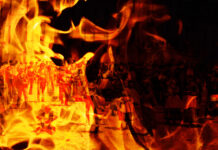
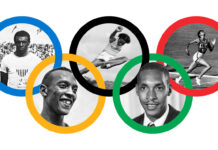


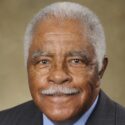

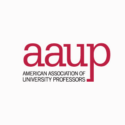





HBCUs cannot compete with larger PWI’s if they compete during the same season. They should RESDESIGN their schedules so that they can be the only schools competing during that time.
Example: What if HBCU footabll season started around the same time MLB and NCAA division I baseball started. They would attract national coverage and sponsorship and would not have to compete against the larger PWI’s. Additionally, they can provide other types of entetainment to bring spectators and national coverage.
HBCU’s will never win if they try to compete with large-scale PWI athletics. They should redesign their schedules so that theire is no COMPETITION…only new revenue.
Hey Brandon,
Are you kidding me with your misguided and dimwitted comment. The main reason why HBCUs football and basketball team are not able to compete with the Historically White Colleges and Universities (HWCUs) is due to White America’s social engineering. In other words Brandon, entirely too many so-called degree holding Blacks and the rest of the so-called Black community have convinced themselves they need perpetual validation from the White establishment. This range from domiciling in White enclaves and for many of these social Black sellouts, even sleeping with or marrying White, Asian, and Latina women. Brandon, I just bet you obtained your PhD from third tier program and it was in the social science. Can you say Qualitative, Quantitative, or MM (that’s Mixed Methods in case you didn’t know).
Dr. A-T,
Great piece of work. You touched ’em all with historical perspectives, critical analysis and objectivity. Yes, time will tell and with a plethora of metrics to gauge the value proposition of HBCU’s the cup will continue to overflow.
Al Tony,
I just finished reading this magnificent statement of fact and need for change. While reading, I my mind kept coming back to the question of how in the world were you able to compile this level of detail information regarding college sports, an area of knowledge most folks know very little about the inside workings and transactions. I plan to send your article to others far and wide. Sincerely, Vince Spaulding, R.A.
Dr. Gilmore:
This is an amazing essay! I hope that you submit it for publication.
JTW
Informative & thought provoking! Kept my attention & I’m not that big of a sports fan! But I’m a HBCU Alumn, who feels we need every opportunity to grow & excel in the vast money grabbing society of white privilege! Everyone can benefit from investing in HBCU schools as well as other highly visible academic programs! We’re full of talent all around!
Dr. Gilmore,
Good description of financial and competitive crossroads of college sports that addresses many aspects of the challenges that colleges face in budget balancing. Good discussion of the multiple sports agencies and ample football and basketball data and statistics.
Dr. Gilmore:
Thank you for this well presented primer on the history and condition of HBCU athletics. As an HBCU alumnus I have been particularly concerned with the impending impact of the transfer portal and NIL deals. I agree with your comment about the schools being “at risk of becoming farm teams”.
When I consider these changes in NCAA student athlete policies, and the rising cost concerns that you have outlined here, I suspect that most HBCUs will ultimately concede to the rising tide and go down divisions to reduce the institutional financial burden while maintaining the atmosphere of HBCU athletic events. This decision has been made inside the HBCU community in the recent past at such schools as Winston-Salem State University and Savannah State University in 2010 and 2019 respectively. Outside the cultural context, the University of Hartford in Connecticut is currently transitioning from D1 to D3 due to financial concerns.
It would be nice to see our HBCU administrators assert a more bold leadership position than simply following their PWI counterparts. I believe that they would be better off making a move that emphasizes the academic strength and heritage of the institutions. I am envisioning a non-scholarship Division 1 HBCU conference like the Ivy-league. This would require HBCU leadership to demonstrate a significant amount of courage in ‘swimming against the tide’. But there is a glimmer of hope in this possibility HBCU family; Presbyterian college just completed exactly this type of cost control maneuver in 2021 transitioning their football program from the Big South to the non-athletic scholarship Pioneer Football League. Juxtapose that decision against Hampton University’s choice to leave the same Big South for the Colonial Athletic Association.
Only time will tell who got it right.
ADDENDUM: Two HBCUs were not included in my article: Bluefield State (Mountain
East Conference) and West Virginia State (Eastern Collegiate Athletic Conference). They are exceptions and the nomenclature HBCU may be misleading in describing those institutions. Both now have predominantly white student enrollments, faculties, and administrators. They are categorized as NCAA Division II schools, and for the 2021-22 athletic season have athletic activities scheduled with traditional HBCUs. Both still maintain football and basketball teams, as well as a range of other sports for men and women.
Dr. Gilmore.. This is a great article that even the casual viewer or sports fan can really comprehend. You nailed it with some of the greatest research depicting the historical paths and achievements, along with the decline of HBCU’s , past and present. Your assertion of the “Money Games” and why we attend these events/social gatherings was right on point. You left no stones unturned.. To know that recently the CIAA basketball tourney in Charlotte out grossed the ACC basketball tourney is so noteworthy .. I will be sending this article to several sports writers connected to HBCU’S. Great work, my brother, keep it up !!!
Tony, once again you hit the nail squarely on the head. While I am still trying to understand the basic structure of the NCAA, you have dissected it with your sharp scalpel and exposed the relationship of all moving parts. I have never read a more comprehensive and detailed explanation of how money drives all NCAA decisions and transactions. I can only say, we fought and died for integration and we got it, hook, line and sinker. God help us.
Thank you for this insightful , well researched and well written article. As we witness the Saudi Arabian investment in golf in America, the new found investment in /philanthropy directed toward HBCUs it is with great interest that I await the Direct monetization with Global governments, corporations and media and HBCU athletics.
Having recently entered into agreements with the HBCU New York Football Classic http://www.HBCUNYFC.com and Coach George Williams Legendary Track and Field Coach of St. Augustine’s University, I can say that vibrant economic opportunities exist within HBCU athletics at home and abroad.
The NFL has games abroad to allow the international community to enjoy and support the most economically vibrant sports league in the world. When Muhammad Ali and George Foreman fought the thriller in Manila global commerce invested in the audience and financial windfall of the two fighters camps.
It seems to me that the CIAA, SWAC, MEAC, and SIAC Athletic Commissioners have opportunities yet to be realized, negotiated, and monetized. Where are the keen analytical business minds in HBCUs, and the distinguished alumni entrepreneurs and commercially successful corporate C Suite level alumni minds on tackling these issues ?
As a product of HBCUs, I know we have the grey matter to solve any problem and figure out any imbroglio. As a Howard University double alum and eared doctoral degree holder in political science and more specifically trained in political theory and black politics (the only such program in the world according to the American Political Science Association President Dianne Pinderhughes of Notre Dame University) I stand in the gap on HBCU athletics economics and finances. A revolution is coming in how business is done in that opportunity space.
In addition, there are those of us HBCU degree holders trained in qualitative, quantitative and mixed methods. As far as instructors, my quant professor Dr. Abdul Kareem Bangura the Senegalese holder of five Ph.D’s and political scientist Dr. Ronald Walters, a mentor, friend, and dissertation committee member were and remain second to none in what they do well. They trained us for global leadership in times, and for opportunities such as these.